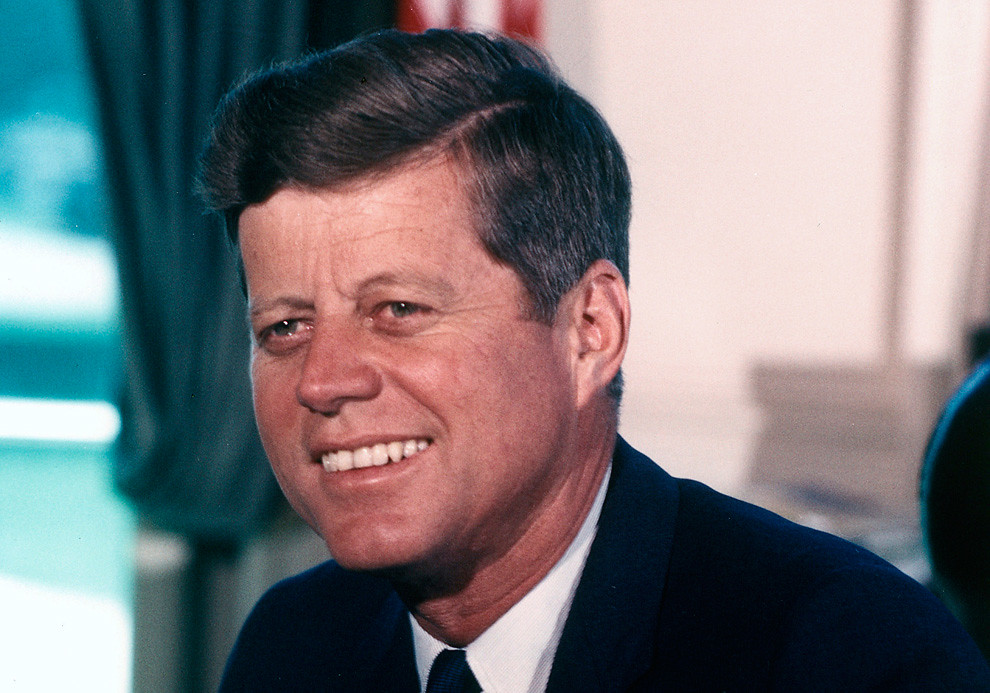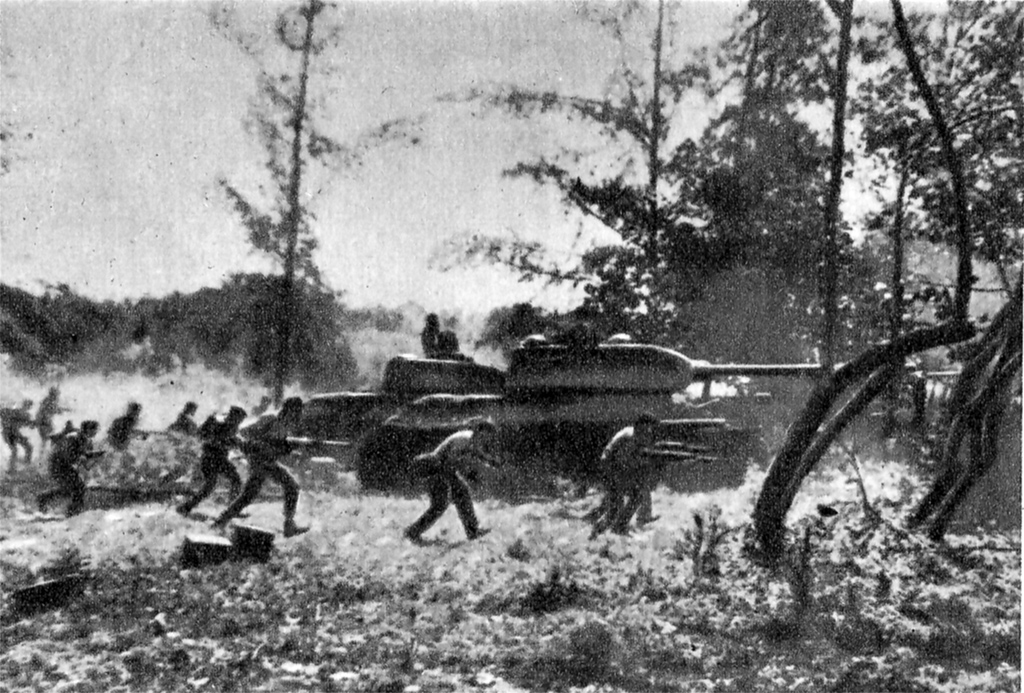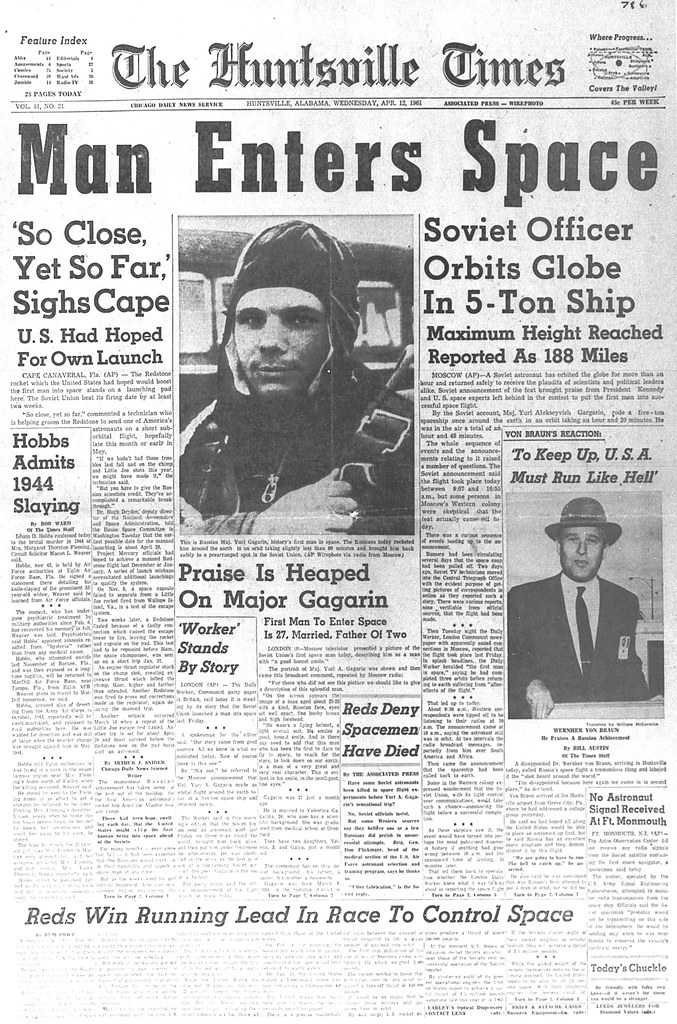
1961 stands as a pivotal year in the annals of modern history, a twelve-month span teeming with events that would indelibly reshape the geopolitical landscape, define an era of intense ideological struggle, and leave an enduring legacy on human endeavor. It was a year where the promise of space exploration soared to unprecedented heights, juxtaposed against the grim reality of a city brutally cleaved by concrete and barbed wire. This period witnessed the escalation of Cold War tensions to a fever pitch, compelling global leaders to confront the existential threat of nuclear confrontation with a gravity previously unimagined.
At the heart of this tumultuous year lay the nascent stages of the Berlin Crisis, a localized conflict that rapidly became a potent symbol of the broader East-West divide. The physical manifestation of this division, the Berlin Wall, would emerge as a stark emblem of oppression and a testament to the iron curtain that had descended across Europe. Yet, beyond the immediate shadows cast by the Wall, 1961 was a mosaic of transformative occurrences, from shifts in American leadership to a daring space race that captivated the world, all contributing to a complex narrative of innovation, conflict, and profound societal change.
This comprehensive overview delves into the most significant events of 1961, offering an in-depth analysis of how each moment, whether a political maneuver, a scientific breakthrough, or a terrifying show of force, contributed to the unique character of this critical year. We will explore the critical junctures that intensified the Cold War, tracing the path from the inauguration of a dynamic new American president to the stark realities of a world teetering on the brink.

1. **The Berlin Wall Construction Begins**The most striking physical manifestation of the Cold War’s ideological divide began on August 13, 1961, with the construction of the Berlin Wall. This barrier fundamentally altered the lives of millions, severing connections and cementing the division between East and West Berlin. Its abrupt appearance was a dramatic move by Soviet-backed East Germany, ostensibly to prevent Western “fascists” from undermining its socialist state, but in practice, to halt the exodus of its own citizens.
The Wall’s genesis immediately transformed Berlin into the most visible fault line of the Cold War. Families were separated overnight, and daily commutes turned into impossible barriers, highlighting the human cost of the geopolitical struggle. It stood as a tangible symbol of oppression, trapping East Germans within their communist regime and sparking outrage and condemnation from the Western world.
The construction was a direct response to the continuous outflow of skilled workers and intellectuals from East Germany to the West, a drain that threatened the economic viability of the German Democratic Republic. By sealing off the border, East Germany aimed to stabilize its population and economy, albeit at the heavy price of its citizens’ freedom of movement. The concrete and barbed wire barrier would stand for nearly three decades, becoming an enduring monument to the stark realities of a divided Europe.
The immediate global reaction was one of shock and apprehension. While the West condemned the Wall as a violation of human rights and international agreements, they also recognized that a direct military confrontation to dismantle it could escalate into a full-scale war. This led to a period of intense diplomatic maneuvering and increased surveillance along the new, fortified border.
The Wall also had a profound psychological impact, not just on Berliners but on the entire world. It crystallized the image of the Iron Curtain, transforming an abstract political metaphor into a concrete, unyielding structure. Its existence underscored the deep-seated fears and mistrust that permeated the relationship between the Soviet bloc and the Western democracies, solidifying a narrative of two opposing worlds.
Read more about: From Concept Car Catastrophe to Production Car Panic: 14 Vehicles That Redefined ‘Awful’ on the Asphalt

2. **John F. Kennedy’s Inauguration**On January 20, 1961, John F. Kennedy was inaugurated as the 35th President of the United States, succeeding Dwight D. Eisenhower. His ascension to the nation’s highest office brought a youthful dynamism and a renewed sense of purpose to American leadership during a period of intense global challenge. His inaugural address, delivered with soaring rhetoric, captured the aspirations of a generation and set a tone for his administration.
Kennedy’s famous inaugural address resonated deeply, particularly his iconic line, “Ask not what your country can do for you—ask what you can do for your country.” This call to civic action and public service galvanized Americans and signaled a shift towards a more active and engaged approach to both domestic issues and international affairs. It marked the beginning of a new era in American politics, characterized by ambition and idealism.
The President’s youthful energy was seen as a refreshing contrast to his predecessor, offering a sense of hope and progress. However, his administration immediately faced formidable challenges, most notably the escalating Cold War, the struggle for civil rights at home, and the burgeoning space race with the Soviet Union. His ability to navigate these complex issues would define his brief but impactful presidency.
His inauguration, occurring just weeks before major Cold War flashpoints like the Bay of Pigs invasion and months before the Berlin Wall’s construction, positioned him squarely at the center of critical global events. The world watched closely as the new American leader articulated his vision for a nation prepared to “pay any price, bear any burden, meet any hardship, support any friend, oppose any foe, in order to assure the survival and the success of liberty.”
This period of transition, from the steady hand of Eisenhower to the bold vision of Kennedy, marked a critical juncture in the Cold War. Kennedy’s rhetoric suggested a more assertive American foreign policy, a stance that would soon be tested by Soviet actions in Berlin and Cuba. His inauguration was not merely a ceremonial event but a statement of intent for a nation poised to lead on the global stage amidst unprecedented challenges.
Read more about: From Stanley Steamer to the Armored Beast: A Deep Dive into Presidential Vehicles That Made History

3. **Bay of Pigs Invasion**The failed Bay of Pigs invasion, an ill-conceived U.S.-backed attempt to overthrow Cuban leader Fidel Castro, occurred in April 1961. This covert operation, initiated under the Eisenhower administration and inherited by President Kennedy, ended in unmitigated disaster, severely straining U.S.-Cuba relations and becoming an early foreign policy humiliation for the new Kennedy presidency.
Approximately 1,400 Cuban exiles, directed by the U.S. government, landed in the Bay of Pigs on April 17, 1961, with the goal of inciting a popular uprising against Castro. The invasion, however, quickly unraveled. Lacking anticipated air support and local popular backing, the invaders were surrounded and ultimately surrendered just three days later, on April 20.
The debacle had significant ramifications. It strengthened Castro’s position in Cuba, solidifying his revolutionary government and pushing him further into the embrace of the Soviet Union. For the United States, it was a profound blow to its international prestige and raised serious questions about the competence of its intelligence agencies and the judgment of its new leadership.
President Kennedy took full responsibility for the failure, a move that, despite the immediate embarrassment, may have ultimately bolstered his image as a leader capable of accountability. However, the event deeply deepened the mistrust between Washington and Havana, paving the way for further confrontations, most notably the Cuban Missile Crisis the following year.
The Bay of Pigs invasion also underscored the dangerous complexities of Cold War proxy conflicts. It demonstrated the perils of underestimating local resistance and overestimating the desire for regime change among a populace. The episode served as a stark reminder of the high stakes involved in confronting communist expansion in the Western Hemisphere and informed subsequent U.S. foreign policy decisions.
Read more about: Mind-Boggling Heists: 11 Priceless Artworks That Vanished from the World’s Top Museums

4. **Yuri Gagarin Becomes the First Human in Space**On April 12, 1961, Soviet cosmonaut Yuri Gagarin made history by becoming the first human to journey into outer space, orbiting Earth aboard Vostok 1. This monumental achievement marked a giant leap for mankind and an extraordinary triumph for the Soviet Union in the intense Cold War space race, capturing the imagination of the world and inspiring a new frontier of human exploration.
Gagarin’s mission saw his space capsule orbit the Earth once, a journey that lasted 108 minutes from launch to landing. The successful flight was a stunning demonstration of Soviet technological prowess, showcasing their lead in the race to conquer space. It delivered a significant psychological victory for the Soviet Union, solidifying its image as a global scientific and engineering leader.
The United States, despite its own advancements in rocketry and space technology, found itself momentarily trailing in this crucial aspect of the Cold War competition. This spurred an urgent redoubling of efforts in the American space program, culminating in President Kennedy’s ambitious declaration just over a month later to land an American man on the moon before the end of the decade.
Gagarin’s safe return to Earth turned him into an instant international hero, celebrated across the globe as a symbol of human courage and scientific achievement. His flight demonstrated that humans could not only survive the rigors of space travel but could also operate complex machinery beyond Earth’s atmosphere, fundamentally changing perceptions of human capability.
Beyond the immediate political and scientific implications, Gagarin’s voyage ignited a global fascination with space. It transcended Cold War rivalries for a moment, reminding humanity of its shared capacity for exploration and discovery. His pioneering flight laid the groundwork for future manned space missions and continues to be remembered as one of the most significant milestones in the history of science and technology.
Read more about: Stepping Back to the Sixties: The 11 Icon-Makers Who Were the True Royals of Style and Shaped the Global Scene

5. **Kennedy’s speech hinting at nuclear war**On July 25, 1961, President John F. Kennedy delivered a somber speech that hinted at the imminent possibility of nuclear war, specifically if the Soviet Union were to attempt to take control of Berlin. This address underscored the extreme tensions surrounding the Berlin Crisis, conveying to the American public and the world the grave implications of the ongoing confrontation and the potentially catastrophic stakes involved.
In his televised speech, Kennedy emphasized his responsibility to instruct civilians on how to act “if bombs began to fall,” detailing initial plans to both increase army draft calls and build fallout shelters. This stark language was a clear effort to prepare the nation for the worst-case scenario, indicating the seriousness with which his administration viewed the Soviet threats regarding Berlin.
The speech served multiple purposes: it was a stern warning to the Soviet Union that the United States would not abandon West Berlin, a call to arms for the American populace to prepare for potential conflict, and a reassurance that the government was taking steps to protect its citizens. It vividly painted a picture of a world on the brink, grappling with the unthinkable consequences of nuclear escalation.
This public acknowledgement of the potential for nuclear war marked a chilling moment in the Cold War. It brought the abstract concept of mutually assured destruction into the homes of ordinary Americans, creating widespread anxiety while also galvanizing national resolve. The administration’s focus on civil defense, though sometimes criticized, highlighted the palpable fear of atomic warfare.
The address was a direct response to escalating Soviet pressure on West Berlin, which they viewed as an outpost of capitalism deep within their sphere of influence. Kennedy’s firm stance, coupled with practical preparations, aimed to deter Soviet aggression while simultaneously preparing his nation for a conflict that no one truly desired. It was a delicate balance of diplomacy and deterrence in an extraordinarily dangerous time.
Read more about: Unveiling the Shadow Warriors: Inside the Secret World of Navy SEALs and Their Unmatched Legacy
6. **Standoff at Checkpoint Charlie**The Cold War tensions in Berlin reached a critical point in late October 1961, culminating in the dramatic standoff at Checkpoint Charlie. On October 27, American and Soviet tanks faced off on either side of this key Berlin Wall crossing point, a harrowing confrontation that lasted for sixteen hours and brought the two nuclear superpowers dangerously close to direct military conflict.
Checkpoint Charlie was established as the primary crossing point between East and West Berlin for Allied personnel and non-German citizens after the construction of the Berlin Wall. The standoff was triggered by disputes over the access rights of U.S. diplomats and military convoys, with Soviet-backed East German guards attempting to enforce restrictions that the Western Allies deemed violations of existing agreements.
The deployment of U.S. M48 Patton tanks to face Soviet T-54 tanks across the demarcation line was a stark display of brinkmanship. Both sides were testing the other’s resolve, with the world watching nervously as the two most powerful military forces on Earth stood poised for battle. The slightest miscalculation or aggressive move could have easily spiraled into a much larger and uncontrollable conflict.
This tense stalemate highlighted the extreme fragility of peace during the Cold War. It underscored how local disputes, particularly in a highly symbolic location like Berlin, could quickly escalate into a global crisis. The resolution of the standoff, with both nations eventually withdrawing their tanks after intensive back-channel negotiations, demonstrated a reluctant but crucial understanding of the need to avoid direct military confrontation.
The Checkpoint Charlie standoff became an iconic image of the Cold War, encapsulating the pervasive threat of nuclear war and the delicate balance of power. It served as a stark reminder of the constant vigilance required to prevent a localized crisis from igniting a global conflagration. The event further cemented Berlin’s status as the epicenter of the ideological battle between East and West.

7. **Tsar Bomba Detonated**On October 30, 1961, the Soviet Union detonated a 50-megaton thermonuclear bomb, dubbed “Tsar Bomba,” above the Novaya Zemlya archipelago. This unprecedented explosion remains the most powerful man-made explosion ever created, a terrifying display of destructive capability that underscored the existential threat of nuclear weapons and further escalated the arms race during the Cold War.
The sheer scale of Tsar Bomba’s detonation was staggering, producing a mushroom cloud that rose over 40 miles high and visible for hundreds of miles. While primarily a propaganda exercise designed to showcase Soviet military power, it also had profound scientific implications, pushing the boundaries of what was thought possible in terms of nuclear yield. The destructive potential demonstrated was beyond anything previously witnessed.
This colossal test, coming just months after President Kennedy’s speech on the possibility of nuclear war and amidst the Berlin Crisis, sent a chilling message across the globe. It was a clear demonstration of the Soviet Union’s capacity to inflict unimaginable devastation, intensifying fears of a global nuclear holocaust and adding another layer of urgency to arms control discussions.
The detonation of Tsar Bomba marked a peak in the nuclear arms race, prompting international outcry and increased calls for a ban on atmospheric nuclear testing. The environmental fallout and the sheer terror evoked by such a powerful weapon contributed to a growing global awareness of the catastrophic consequences of nuclear warfare, influencing future disarmament efforts.
More than just a scientific experiment, Tsar Bomba was a geopolitical statement. It was a grim reminder of the destructive power held by the world’s superpowers and a stark illustration of the perilous path the Cold War had taken. Its detonation became a symbol of humanity’s capacity for self-destruction, eternally etched into the collective memory of a generation living under the shadow of the atomic age.
Beyond the shadows cast by the Cold War, 1961 also saw a myriad of profound changes rippling through societies, technologies, and cultures worldwide. This period was not solely defined by the tensions between superpowers but also by internal transformations, pioneering innovations, and burgeoning movements that collectively shaped the latter half of the 20th century. From grassroots efforts for civil rights to advancements that would redefine the workplace, and from literary masterpieces to the emergence of global cultural icons, the year was a rich tapestry of human endeavor that extended far beyond the geopolitical fault lines.
Read more about: Acoustic Annihilation: Exploring 11 Earth-Shattering Sounds That Push the Limits of Human Perception and Require Serious Hearing Protection
8. **Freedom Riders Challenge Segregation**In May 1961, a courageous and pivotal series of actions began as civil rights activists, known as the Freedom Riders, embarked on bus trips through the American South. Their mission was clear: to challenge and test the newly enacted Supreme Court ruling against segregation in interstate travel facilities. These journeys were designed to expose the systemic resistance to desegregation in Southern states, bringing the stark realities of racial discrimination into national focus.
The Freedom Riders deliberately traveled on buses into states where segregated bus terminals remained commonplace, despite federal prohibitions. Their actions highlighted the direct contradiction between federal law and local practice, deliberately provoking reactions that would garner media attention and pressure the federal government to enforce its own mandates. Their unwavering commitment to nonviolent protest in the face of violent opposition proved instrumental in galvanizing support for the civil rights movement.
Their courageous actions, though met with brutal resistance and violence in many instances, drew significant national attention to the injustices of segregation. The images and reports of their defiance and suffering resonated deeply with a broad public, forcing a confrontation with the deeply entrenched racial prejudices that permeated American society. This campaign was not merely about bus terminals; it was about the fundamental right to equality and freedom of movement for all citizens.
The sacrifices and determination of the Freedom Riders played a critical role in accelerating the pace of civil rights reform in the United States. By courageously challenging the status quo, they helped to expose the moral bankruptcy of segregation and inspired further legislative and social change. Their legacy remains a powerful testament to the impact of direct action in the pursuit of justice, underscoring 1961 as a year of profound social activism.

9. **IBM Introduces the Selectric Typewriter**A significant technological advancement that redefined office work in 1961 was the launch of the IBM Selectric typewriter. This machine was not just an incremental improvement; its revolutionary design fundamentally altered the experience of typing and introduced unprecedented levels of efficiency and aesthetic appeal to business communication. It quickly became a staple in offices around the globe, symbolizing a new era of streamlined productivity.
The Selectric’s most distinctive feature was its spherical typing element, or “typeball,” which rotated and pivoted to strike the paper, eliminating the need for individual typebars. This innovative design provided a crisper, more consistent print quality and allowed for much faster typing speeds. Unlike traditional typewriters, the Selectric’s typeball could also be easily interchanged, enabling users to switch between different fonts and styles without changing the entire machine.
This breakthrough in typewriter technology offered significant benefits in terms of both speed and accuracy. The typeball mechanism also reduced the mechanical complexity and maintenance issues associated with traditional typebar systems. Furthermore, its sleek, modern aesthetic and quieter operation contributed to a more professional and pleasant office environment, marking a notable shift in the tools of everyday commerce.
The introduction of the Selectric typewriter represented a crucial step in the evolution of office automation, predating the widespread adoption of personal computers. It showcased how thoughtful engineering could dramatically enhance human productivity and improve the quality of printed communication. Its legacy as an iconic and impactful piece of office equipment from the 1960s is secure, reflecting a year of significant innovation.
Read more about: Beyond the Blockbuster: Unpacking Tom Hanks’ Jaw-Dropping Antique Typewriter Collection

10. **”Catch-22″ Published**In the realm of cultural milestones, 1961 marked the publication of Joseph Heller’s satirical novel, “Catch-22.” This profound and darkly comedic work immediately captured the zeitgeist of a generation grappling with bureaucracy, logic, and the absurdities of war. The book’s title itself quickly entered the English lexicon, becoming a widely recognized term to describe a no-win situation, a paradoxical dilemma from which escape is impossible.
Heller’s narrative, set during World War II, delves into the experiences of American airmen in a highly bureaucratic and illogical military system. Through sharp wit and incisive observation, the novel critiques the irrationality of command, the psychological toll of conflict, and the inherent contradictions within institutional power structures. Its themes resonated deeply with readers confronting the complexities of modern life and governance.
The novel’s impact extended far beyond literary circles, influencing public discourse and challenging conventional notions of heroism and patriotism. Its non-linear structure and vivid characterizations contributed to its unique voice, cementing its place as a groundbreaking piece of American literature. “Catch-22” offered a compelling and often disturbing commentary on the human condition in the face of overwhelming and nonsensical systems.
Its lasting influence is evidenced by the enduring popularity of the phrase “catch-22” and the novel’s continued relevance in discussions about war, power, and individual agency. The book solidified its status as a classic of 20th-century literature, reflecting a cultural landscape in 1961 that was ready for profound and critical artistic expressions. Heller’s work profoundly captured the anxieties and ironies of the age, establishing itself as a seminal text.
Read more about: Beyond the Booth: Unpacking 13 Legendary Music Feuds That Rocked the Industry

11. **Peace Corps Established**President John F. Kennedy, early in his administration, established the Peace Corps in March 1961, an initiative that would become a hallmark of his vision for American engagement with the world. This groundbreaking program was conceived to send American volunteers abroad to assist developing nations with crucial education, health, and development projects. It represented a novel approach to foreign aid, focusing on direct human connection and skill-sharing.
The Peace Corps was founded on the principle of promoting world peace and friendship through practical assistance and cultural exchange. Volunteers, often young Americans, committed to serving for two years in various countries, working at the grassroots level to address local needs. This hands-on approach aimed to foster mutual understanding and demonstrate American goodwill in a tangible, non-military capacity.
The program’s establishment reflected a broader shift in U.S. foreign policy, seeking to counter Soviet influence not through military might, but through humanitarian and developmental efforts. By empowering communities and building local capacity, the Peace Corps sought to cultivate long-term relationships based on shared progress. It was an ambitious endeavor to project a positive image of America globally.
Over the decades, the Peace Corps has evolved, but its core mission of service and cultural exchange has remained consistent. Its inception in 1961 underscored a period of idealism and a belief in the power of individual citizens to contribute to global challenges. The program became a symbol of American commitment to international development and cooperation, distinguishing 1961 as a year of proactive global citizenship.
Read more about: Peter Yarrow, The Enduring Voice of Peter, Paul and Mary, Dies at 86: A Retrospective on a Folk Icon’s Formative Years and Profound Impact

12. **South Africa Withdraws from the Commonwealth**In a significant diplomatic and political development, South Africa officially withdrew from the British Commonwealth in 1961. This decision marked a critical moment in the country’s international standing, directly stemming from the widespread condemnation of its apartheid policies. The move underscored the growing global isolation of South Africa as the world increasingly rejected its system of institutionalized racial segregation.
The withdrawal was largely a response to mounting pressure and criticism from other Commonwealth nations, particularly newly independent African and Asian states. These nations found South Africa’s racial policies to be irreconcilable with the Commonwealth’s principles of equality and human rights. Rather than face expulsion or continued ostracism, the South African government opted to sever its ties with the multinational organization.
This departure from the Commonwealth was a stark symbol of South Africa’s international isolation, a consequence directly linked to its apartheid regime. It signaled a period where the country became increasingly marginalized on the global stage, facing boycotts, sanctions, and widespread diplomatic censure. The move reflected a global consensus against racial discrimination that was beginning to solidify.
The event in 1961 highlighted the deepening moral divide between South Africa and the majority of the international community. It was a tangible manifestation of the growing global anti-apartheid movement and an early indicator of the sustained international campaign that would eventually lead to the dismantling of apartheid. The year served as a critical juncture in the struggle against racial injustice on a global scale.

13. **The Beatles Perform at The Cavern Club**A truly defining moment in the history of popular music and global culture occurred on February 9, 1961, when The Beatles made their debut appearance at The Cavern Club in Liverpool. This seemingly local event, featuring four young musicians from Merseyside, marked the very beginning of a phenomenon that would utterly transform the music industry and captivate audiences worldwide. It was the first of their 292 performances at the legendary venue, a crucible for their burgeoning talent.
At this point, the band was still honing its craft, playing to local crowds in the intimate, brick-lined cellar. The energy and raw talent that would later make them household names were already evident, captivating audiences with their innovative blend of rock and roll, rhythm and blues, and pop. The Cavern Club became their proving ground, a place where they refined their sound and developed their electrifying stage presence.
This initial performance at The Cavern Club, while humble in its immediate scope, was a foundational step in their meteoric rise to global fame. It provided the essential platform for them to build a loyal local following, which in turn attracted the attention of managers and record labels. Without these formative performances, their subsequent global dominance and cultural impact might have taken a very different trajectory.
The significance of The Beatles’ early Cavern Club appearances in 1961 cannot be overstated. It was the genesis of a cultural revolution, laying the groundwork for the “Beatlemania” that would sweep the globe and forever alter the landscape of popular music and youth culture. The year thus holds a special place in the annals of cultural history, marking the true beginning of one of the most influential bands of all time.
14. **First Use of Industrial Robots**The landscape of manufacturing and industry underwent a quiet yet revolutionary transformation in 1961 with the installation of the first industrial robot, Unimate, at a General Motors factory in New Jersey. This pioneering deployment signaled the dawn of automation in heavy industry, fundamentally altering production processes and foreshadowing the widespread integration of robotics in the decades to follow.
Unimate, a programmable machine, was designed to perform repetitive and hazardous tasks on the assembly line. Its initial role at General Motors involved moving hot pieces of die-cast metal and welding car bodies. This innovative application demonstrated how mechanical arms could operate with precision and endurance far beyond human capabilities in strenuous or dangerous environments, enhancing both safety and efficiency.
The integration of Unimate represented a significant leap in manufacturing technology, moving beyond simple mechanization to true automation. By handling tasks that were monotonous or too risky for human workers, the robot boosted overall efficiency and consistency in production. It liberated human laborers from the most physically demanding aspects of factory work, allowing them to focus on more complex, supervisory roles.
This deployment in 1961 was not just a technological curiosity; it was a foundational moment for modern manufacturing. It initiated a paradigm shift toward robotic automation, which would later become indispensable across various industries globally. The introduction of the industrial robot underscored 1961 as a year of critical innovation that laid the groundwork for the automated factories and advanced production lines that define contemporary industry.
Read more about: Beyond the Booth: 12 Groundbreaking Prototypes and Strategies That Command the Spotlight at Any Trade Show
As we look back at 1961, it becomes clear that it was a year of profound contradictions and exhilarating progress. From the grim division of Berlin and the chilling specter of nuclear conflict, to the hopeful strides in civil rights, the quiet revolution in office technology, and the vibrant emergence of cultural icons, this single year encapsulated a world in flux. It was a period where humanity grappled with its darkest fears while simultaneously reaching for its highest aspirations, forever shaping the trajectory of the modern age. The events of 1961 remind us that history is not a linear march but a complex interplay of conflict, innovation, and unwavering human spirit, leaving an indelible mark on the global consciousness.



